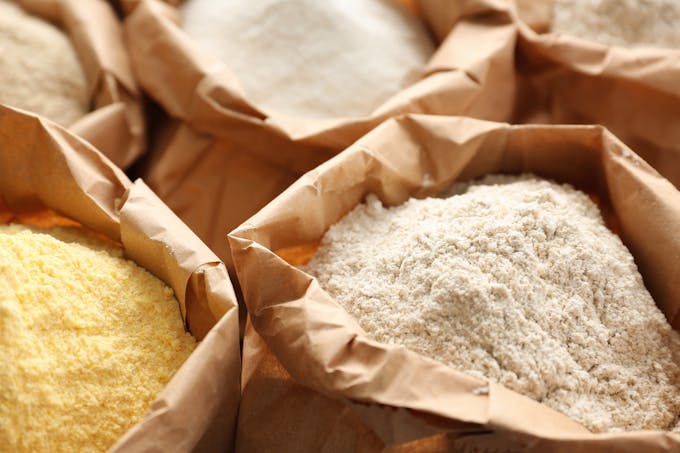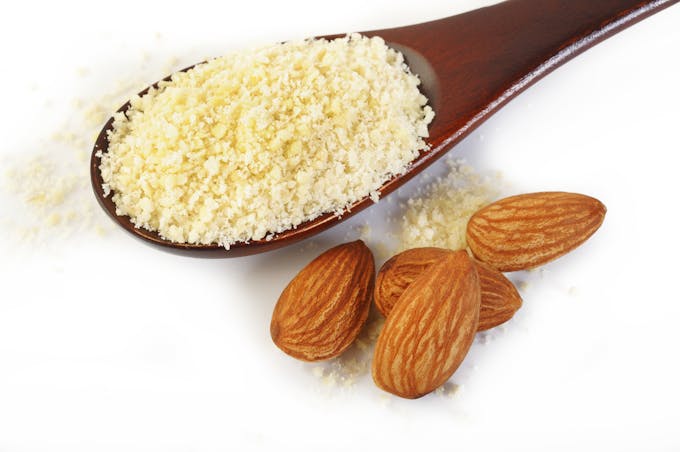Coconut Flour vs. Almond Flour

Keto vs. Non-Keto
Quickly compare keto-friendly foods with non-keto options for easy reference
Use this wallet card to make informed food choices while shopping or dining out
Identify fake keto foods and ingredients that you should avoid
Simplify decision-making with clear, practical guidelines

Keto vs. Non-Keto
Quickly compare keto-friendly foods with non-keto options for easy reference
Use this wallet card to make informed food choices while shopping or dining out
Identify fake keto foods and ingredients that you should avoid
Simplify decision-making with clear, practical guidelines

Keto vs. Non-Keto
Quickly compare keto-friendly foods with non-keto options for easy reference
Use this wallet card to make informed food choices while shopping or dining out
Identify fake keto foods and ingredients that you should avoid
Simplify decision-making with clear, practical guidelines

Keto vs. Non-Keto
Quickly compare keto-friendly foods with non-keto options for easy reference
Use this wallet card to make informed food choices while shopping or dining out
Identify fake keto foods and ingredients that you should avoid
Simplify decision-making with clear, practical guidelines

Keto vs. Non-Keto
Quickly compare keto-friendly foods with non-keto options for easy reference
Use this wallet card to make informed food choices while shopping or dining out
Identify fake keto foods and ingredients that you should avoid
Simplify decision-making with clear, practical guidelines

Keto vs. Non-Keto
Quickly compare keto-friendly foods with non-keto options for easy reference
Use this wallet card to make informed food choices while shopping or dining out
Identify fake keto foods and ingredients that you should avoid
Simplify decision-making with clear, practical guidelines

Keto vs. Non-Keto
Quickly compare keto-friendly foods with non-keto options for easy reference
Use this wallet card to make informed food choices while shopping or dining out
Identify fake keto foods and ingredients that you should avoid
Simplify decision-making with clear, practical guidelines

Keto vs. Non-Keto
Quickly compare keto-friendly foods with non-keto options for easy reference
Use this wallet card to make informed food choices while shopping or dining out
Identify fake keto foods and ingredients that you should avoid
Simplify decision-making with clear, practical guidelines

Keto vs. Non-Keto
Quickly compare keto-friendly foods with non-keto options for easy reference
Use this wallet card to make informed food choices while shopping or dining out
Identify fake keto foods and ingredients that you should avoid
Simplify decision-making with clear, practical guidelines

Keto vs. Non-Keto
Quickly compare keto-friendly foods with non-keto options for easy reference
Use this wallet card to make informed food choices while shopping or dining out
Identify fake keto foods and ingredients that you should avoid
Simplify decision-making with clear, practical guidelines

Keto vs. Non-Keto
Quickly compare keto-friendly foods with non-keto options for easy reference
Use this wallet card to make informed food choices while shopping or dining out
Identify fake keto foods and ingredients that you should avoid
Simplify decision-making with clear, practical guidelines

Keto vs. Non-Keto
Quickly compare keto-friendly foods with non-keto options for easy reference
Use this wallet card to make informed food choices while shopping or dining out
Identify fake keto foods and ingredients that you should avoid
Simplify decision-making with clear, practical guidelines

Keto vs. Non-Keto
Quickly compare keto-friendly foods with non-keto options for easy reference
Use this wallet card to make informed food choices while shopping or dining out
Identify fake keto foods and ingredients that you should avoid
Simplify decision-making with clear, practical guidelines

Keto vs. Non-Keto
Quickly compare keto-friendly foods with non-keto options for easy reference
Use this wallet card to make informed food choices while shopping or dining out
Identify fake keto foods and ingredients that you should avoid
Simplify decision-making with clear, practical guidelines

Keto vs. Non-Keto
Quickly compare keto-friendly foods with non-keto options for easy reference
Use this wallet card to make informed food choices while shopping or dining out
Identify fake keto foods and ingredients that you should avoid
Simplify decision-making with clear, practical guidelines

Keto vs. Non-Keto
Quickly compare keto-friendly foods with non-keto options for easy reference
Use this wallet card to make informed food choices while shopping or dining out
Identify fake keto foods and ingredients that you should avoid
Simplify decision-making with clear, practical guidelines

Keto vs. Non-Keto
Quickly compare keto-friendly foods with non-keto options for easy reference
Use this wallet card to make informed food choices while shopping or dining out
Identify fake keto foods and ingredients that you should avoid
Simplify decision-making with clear, practical guidelines

Keto vs. Non-Keto
Quickly compare keto-friendly foods with non-keto options for easy reference
Use this wallet card to make informed food choices while shopping or dining out
Identify fake keto foods and ingredients that you should avoid
Simplify decision-making with clear, practical guidelines

Keto vs. Non-Keto
Quickly compare keto-friendly foods with non-keto options for easy reference
Use this wallet card to make informed food choices while shopping or dining out
Identify fake keto foods and ingredients that you should avoid
Simplify decision-making with clear, practical guidelines

Keto vs. Non-Keto
Quickly compare keto-friendly foods with non-keto options for easy reference
Use this wallet card to make informed food choices while shopping or dining out
Identify fake keto foods and ingredients that you should avoid
Simplify decision-making with clear, practical guidelines

Keto vs. Non-Keto
Quickly compare keto-friendly foods with non-keto options for easy reference
Use this wallet card to make informed food choices while shopping or dining out
Identify fake keto foods and ingredients that you should avoid
Simplify decision-making with clear, practical guidelines

Keto vs. Non-Keto
Quickly compare keto-friendly foods with non-keto options for easy reference
Use this wallet card to make informed food choices while shopping or dining out
Identify fake keto foods and ingredients that you should avoid
Simplify decision-making with clear, practical guidelines
Both coconut flour and almond flour are low-carb, grain-free alternatives to wheat flour. But is one of these flours more keto-friendly than the other? The answer may surprise you.
Let’s look at why almond flour is an ideal keto-friendly flour and how you can incorporate it successfully into your keto recipes.

What is coconut flour?
Coconut flour is dried coconut meat ground to a fine powder. Coconut pulp, a byproduct of coconut milk production, is dehydrated and milled into coconut flour. It’s low-carb, naturally gluten-free, mild in flavor, and a good substitute for conventional wheat flour.
Coconut flour absorbs a lot of moisture, and you want to add plenty of eggs and liquids to your recipes. It produces slightly thicker batter than other flours and is great for pancakes, muffins, waffles, and cakes.
Coconuts are technically tree nuts but are generally well tolerated, even by people sensitive to tree nuts. However, some people with tree nut allergies can react, so it’s best that you check with your doctor whether coconut flour is safe if you are allergic to coconuts or other tree nuts.

What is almond flour?
Almond flour is made from grinding blanched almonds into fine flour. Blanching the almonds with boiling water removes the outer skin, resulting in a fine powder with a fluffy texture.
Almond flour is low-carb and gluten-free, making it an ideal substitute for wheat flour for keto baking and dessert recipes.
Almond flour is white with a light texture that can be easily substituted for all-purpose flour. With its sweet and nutty flavor, almond flour adds depth to many baked goods like macaroons, cakes, and bread.
Don’t mistake almond flour for almond meal, which is similar to almond flour but made from unblanched almonds. Because almond meal contains almond skins, it’s coarser than almond flour.
People with nut allergies should avoid finely ground almonds and use keto-friendly flour like sunflower seed flour, chia flour, or a moderate amount of coconut flour.
Coconut flour and almond flour compared
Almond flour and coconut flour are low-carb and gluten-free. Both are keto-friendly flours and the most popular flour substitutes used in many keto recipes. Watch the above video to learn more about coconut flour vs. almond flour.
Let's look at the nutrition facts of both flours and why almond flour is the perfect flour for keto.
Nutrition facts
Here are the nutritional facts on how one cup of coconut flour compares to one cup of almond flour:
Coconut flour:
Calories: 551
Fat: 22 g
Carbs: 65 g
Net carbs: 54 g
Sugar: 19 g
Protein: 32 g
Almond flour:
Calories: 648
Fat: 56 g
Carbs: 24 g
Net carbs: 10 g
Sugar: 5 g
Protein: 24 g

Which is more keto-friendly?
Almond flour has twice as much fat and half the amount of net carbs compared to coconut flour, crowning it the clear winner for being the most keto-friendly of the two flours. Its high-fat, low-carb content makes almond flour an ideal ingredient to include in your keto diet.
Almond flour has slightly more calories than coconut flour due to the high amount of healthy fats, a crucial component of the keto diet. It’s the perfect ingredient if you want to experiment with your keto recipes and try your hand at baking.
Health benefits
Almond and coconut flours are keto-friendly, grain-free flours and have plenty of health benefits. Coconut flour is a rich source of fiber and medium-chain triglycerides (MCTs), a fat easily digested that helps ketone production.
Because MCTs don’t require bile for absorption, they are easier to digest without a gallbladder and are a good option for your keto diet after gallbladder removal. It’s best to avoid large amounts of food with coconut flour; the high net carbs in coconut flour can quickly push you out of ketosis.
Both flours are high in fiber, and research suggests that a fiber-rich diet significantly benefits your health. Fiber supports steady blood sugar levels, aids weight loss, improves detoxification, and feeds the beneficial bacteria in your gut.
Both flours have health benefits, but almond flour is nutritionally superior to coconut flour. Almond flour is rich in essential nutrients needed to promote a healthy body like:
Vitamin E - needed for vital immune function and healthy skin
Magnesium - supports heart health and balanced blood sugar levels
Copper - aids red blood cell production and keeps nerve cells healthy
Manganese - required for energy metabolism and healthy bones
In fact, studies show that almonds have a protective effect against diabetes, obesity, and heart disease.

Uses for coconut flour and almond flour
Because coconut flour typically forms a heavier batter, it’s excellent for waffles, cakes, and pancakes. It’s made from dehydrated coconut meat and is very absorbent. Most coconut flour recipes call for extra eggs and liquid to compensate for the amount of moisture it absorbs.
Almond flour behaves similarly to wheat flour with its delicate texture. Its slightly nutty flavor makes it an ideal ingredient for bread, muffins, and french pastries like macaroons. Almond flour contains more moisture than coconut flour, making it a great cake flour and perfect for baking cookies.
Don’t limit the use of almond flour to desserts and cakes—its light texture is perfect for savory bakes like Keto Naan Bread.
Almond flour and coconut flour have slightly different tastes. Coconut flour is somewhat sweeter, while almond flour has a nuttier taste—so experiment with flavors and ratios for your keto desserts.
You can also combine both flours to get the right balance of texture and taste. This Keto Coconut Pecan Cake calls for almond flour and small amounts of coconut flour to achieve a moist but light bake.
You can substitute coconut flour with almond flour or vice versa. One cup of almond flour is the equivalent of ¼ cup of coconut flour.
Almond flour can be used for many keto bomb recipes like Keto Cinnamon Roll Fat Bombs or Keto Speckled Gingerbread Fat Bombs. Because of almond flour’s delicate texture, it’s easy to overeat these delicious keto bombs—you want to avoid snacking on them or eating too many.

Key takeaways
Coconut and almond flour are both low-carb alternatives to wheat flours. Almond flour contains more fat and fewer net carbs than coconut flour and makes a great keto-friendly alternative to white flour.
Coconut flour’s high net carbs can push you out of ketosis. Use only small amounts or substitute with almond flour for your keto-friendly desserts and bread.
Almond flour is an excellent keto-friendly flour rich in nutrients and low in carbs, keeping your metabolism in fat-burning mode while enjoying tasty treats.
FAQs
1. Are coconut flour and almond flour interchangeable?
While coconut flour and almond flour are both low in carbs and gluten-free, they have different textures and flavors. You can substitute almond flour for coconut flour and vice versa, but using the correct conversion rate is crucial.
Coconut flour contains less moisture than almond flour; substituting the exact quantities with coconut flour will result in a dry and crumbly bake.
Because coconut flour has less fat and more carbs than almond flour, you want to avoid using large amounts in your recipes. Using coconut flour interchangeably with almond flour may exceed your daily net carbs, pushing you out of ketosis.
2. Can I use almond flour instead of coconut flour?
Yes, you can use almond flour instead of coconut flour. If the recipe calls for ¼ cup of coconut flour, substitute with 1 cup of almond flour.
While almond flour has a slightly different taste and texture than coconut flour, it’s lower in carbs and contains more fat, making it an ideal keto-friendly baking ingredient.
3. Can I use coconut flour instead of almond flour?
Yes, you can use coconut flour instead of almond flour. If the recipe calls for 1 cup of almond flour, substitute with ¼ cup of coconut flour.
Coconut flour is higher in net carbs than almond flour, and you want to avoid using large quantities to keep you in ketosis.
4. What is the conversion ratio for coconut flour and almond flour?
To substitute coconut flour with almond flour, follow a 1:4 ratio:
If the recipe calls for 1 cup of almond flour, substitute with ¼ cup of coconut flour.
If the recipe calls for ¼ cup of coconut flour, substitute with 1 cup of almond flour.
5. How many carbs are in coconut flour?
One cup of coconut flour contains 65 g carbs, 54 g net carbs, and 19 g sugar.
6. How many carbs are in almond flour?
One cup of almond flour contains 24 g carbs, 10 g net carbs, and 10 g sugar.
7. Is coconut flour keto?
Coconut flour in small amounts is keto-friendly. Compared to wheat flour, coconut flour is low in carbs but does contain 65 g of carbs per cup. It’s best to avoid large quantities in your baking or substitute some or all coconut flour with almond flour.
Almond flour has fewer carbs and more fat than coconut flour, making it an ideal substitute for coconut flour.
8. Is almond flour keto?
Yes, almond flour is keto-friendly. In fact, it’s one of the best keto flours you can use. Almond flour contains 56 g of fat but only 10 g of net carbs per cup, making it an excellent keto-approved flour for your keto recipes.
9. What is the best flour to use on keto?
Almond flour is the clear winner when comparing coconut flour vs. almond flour. It has twice as much fat and half the amount of net carbs compared to coconut flour. It can easily be substituted for wheat flour and is grain-free and gluten-free.
Almond flour is made by grinding blanched almonds into a light powder with a fine texture and a slightly nutty flavor. You can also use a more coarse unblanched almond flour called almond meal. It has a similar taste to almond flour but adds more texture and is an ideal keto-friendly breadcrumb alternative.
10. Is coconut flour good for baking?
Coconut flour has a mild, slightly sweet flavor and can be used for baking. It’s crucial to know that coconut flour is dehydrated and attracts a lot of moisture.
Coconut flour recipes typically require more wet ingredients like eggs and liquid, or you will end up with a dry, crumbly bake.
11. Is almond flour good for baking?
Almond flour is excellent for baking. Its light, powdery texture behaves similarly to wheat flour and is a perfect keto-friendly substitute for grain flour. It’s high-fat and low-carb, making it the best keto-approved flour you can use for your recipes.
12. What is coconut flour best used for?
Coconut flour creates a heavier batter that works well with pancakes, waffles, and muffins. It has a mild, sweet flavor and adds depth to keto desserts like Coconut Chocolate Chip Cookies.
13. What is almond flour best used for?
Almond flour is versatile and can be used for most desserts and bakes. Because of its slightly nutty flavor and airy texture, it’s commonly used for bread, french pastries like macaroons, and light cakes.
Almond flour also is great for savory bakes like naan bread or tortillas. Almond meal is an excellent substitute for breadcrumbs to bulk out meatballs and crust pork or fish dishes.
14. Will coconut flour and almond flour rise?
Coconut and almond flour are gluten-free and won’t rise like wheat flour.
15. How do you make coconut and almond flour rise?
Coconut and almond flour don't rise, but you can take steps to get an airy and fluffy texture for your bakes.
Psyllium husk is a keto-friendly fiber and can be added to thicken and bind batter. It's commonly used in gluten-free recipes and enhances the texture and lightness of cakes and bread.
Add plenty of eggs to your coconut flour recipes. Eggs provide protein and moisture, giving structure and texture.
While almond flour doesn't rise, you can achieve a light bake if you don't overwork the ingredients and store almond flour in the fridge. Avoid packing almond flour densely, keeping it as loose as possible.
16. Can I use coconut flour and almond flour instead of all-purpose flour?
Both coconut and almond flour can be used as all-purpose flour substitutes. Almond flour is similar to white flour and can be substituted with the exact amounts the recipe calls for.
You will need less coconut flour than all-purpose flour. Substitute one cup of all-purpose flour with ¼ cup of coconut flour.
17. Does coconut flour taste like coconut?
No, coconut flour doesn’t have a strong coconut flavor. During processing, coconut milk and coconut oil are removed, leaving coconut flour with a mild, slightly sweet taste.
18. Does almond flour taste like almonds?
Almond flour has a slightly nutty flavor, similar to almonds.
19. Do coconut flour and almond flour go bad?
Yes, coconut flour and almond flour can go bad. It’s best to store both flours in airtight containers in the fridge to prevent them from going rancid and moldy. If your flour is chunky, changes color, or smells slightly pungent, it’s best to throw it out.
20. Does coconut flour have gluten?
No, coconut flour is a gluten-free flour.
21. Does almond flour have gluten?
No, almond flour is a gluten-free, keto-approved flour.
Previous blog
Starving Your Body of Sleep: This is What HappensTags

Popular
08/21/2024
55.7K views
02/23/2025
46.8K views
11/18/2024
281.1K views
03/18/2024
11/21/2022




